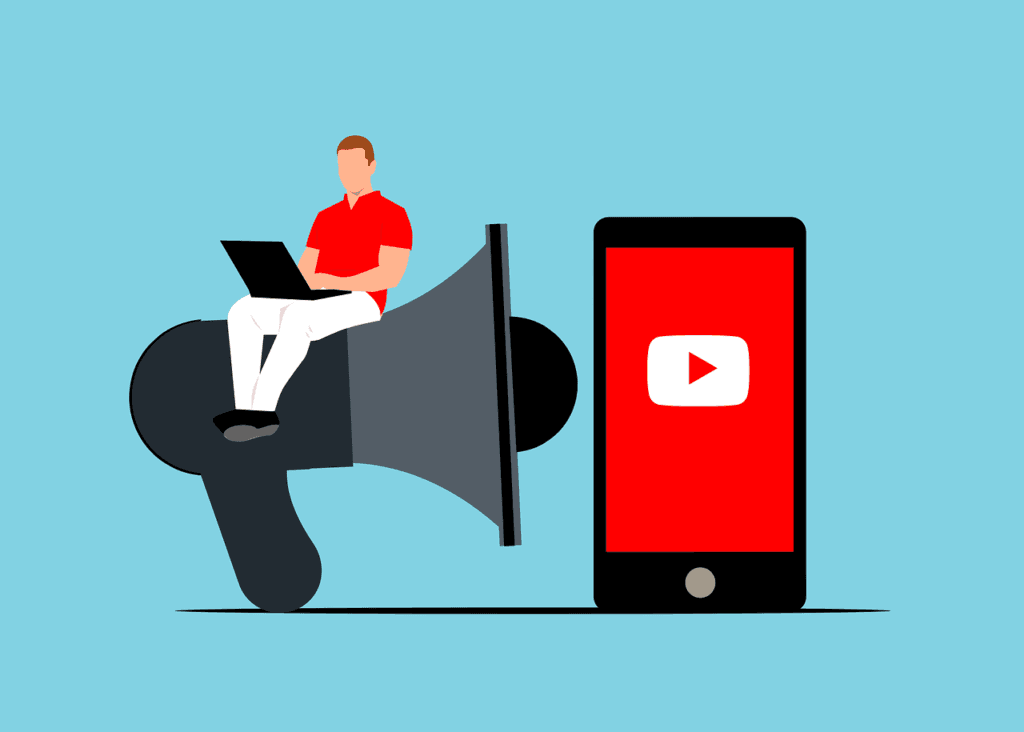In today’s fast-paced digital world, traditional marketing strategies might not be enough to capture attention and drive engagement. To stand out, businesses need to innovate and think outside the box. We will explore creative and innovative ideas for marketing projects that can help your business connect with your audience, build brand loyalty, and drive growth. Whether you’re a startup founder or a seasoned marketer, these strategies will provide you with fresh insights and actionable tactics to elevate your marketing efforts.
Creating Interactive Content
Interactive content can significantly enhance engagement by providing a dynamic and personalized experience for users. Unlike static content, interactive elements invite participation, making your audience an active part of the marketing message.
Quizzes and Surveys
Quizzes and surveys are excellent tools for engaging your audience and collecting valuable data. Design quizzes that are fun and relevant to your brand, such as “Which Product is Right for You?” or “How Much Do You Know About Our Services?”
These can help drive traffic to your website and keep visitors engaged.
Surveys can be used to gather feedback about customer satisfaction, product preferences, and market trends. Share these through email newsletters and social media to encourage participation.
The insights gained from surveys can guide your marketing strategies and product development.
Interactive Infographics
Infographics are a popular way to present data and information visually. Enhance them by adding interactive elements such as clickable icons, animated graphs, and embedded videos.
Interactive infographics can make complex information more digestible and engaging.
Create infographics that showcase your industry expertise, highlight the benefits of your products, or provide educational content related to your niche. Share them on your website, social media, and as part of email marketing campaigns to attract and retain your audience’s attention.
Leveraging Augmented Reality (AR)
Augmented Reality (AR) offers a unique and immersive way to engage with your audience. By overlaying digital content in the real world, AR can create memorable and interactive experiences that drive brand engagement.
AR Product Try-Ons
For businesses in the retail, fashion, or beauty industries, AR product try-ons can revolutionize the shopping experience. Develop an AR app or integrate AR features into your website, allowing customers to virtually try on clothes, accessories, or makeup.
This not only enhances the user experience but also reduces the likelihood of returns.
Promote your AR try-on feature through social media and email marketing, encouraging customers to share their virtual try-ons with your brand’s hashtag.
This can increase visibility and attract more users to try out your products.
Interactive AR Campaigns
Create AR campaigns that encourage users to interact with your brand in fun and engaging ways. This could include AR treasure hunts, branded filters for social media, or AR-based games.
These campaigns can be tied to product launches, seasonal promotions, or brand milestones.
For example, a restaurant could develop an AR scavenger hunt that leads participants to different locations in the city, with rewards at each stop. Such interactive experiences can generate buzz and encourage social sharing, amplifying your campaign’s reach.
Utilizing Video Marketing
Video marketing remains one of the most effective ways to capture attention and convey your message. By incorporating innovative video strategies, you can enhance engagement and drive conversions.
Live Streaming
Live streaming allows you to connect with your audience in real-time, creating a sense of immediacy and authenticity. Use live streaming to host Q&A sessions, product launches, behind-the-scenes tours, or live events.
Platforms like Facebook Live, Instagram Live, and YouTube Live make it easy to reach your audience.
Promote your live streams in advance to build anticipation and ensure a good turnout. Engage with viewers by responding to comments and questions during the stream, creating a two-way conversation that strengthens your connection with your audience.
Personalized Video Messages
Personalized video messages can make your marketing efforts feel more human and tailored to individual customers. Use personalized videos in your email marketing campaigns, addressing recipients by name and mentioning specific details about their interests or past interactions with your brand.
These videos can be used to thank customers for their purchases, provide product recommendations, or offer exclusive discounts. Personalization can significantly enhance customer loyalty and increase the effectiveness of your marketing campaigns.
Implementing Influencer Collaborations
Influencer marketing continues to be a powerful strategy for reaching new audiences and building brand credibility. By collaborating with influencers who align with your brand values, you can leverage their reach and influence.
Co-Creating Content
Work with influencers to co-create content that resonates with their audience and highlights your brand in an authentic way. This could include joint blog posts, social media takeovers, or collaborative videos.
Co-created content can provide fresh perspectives and introduce your brand to a wider audience.
Choose influencers whose followers match your target demographic and who have a genuine interest in your products or services. Authentic collaborations are more likely to resonate with their audience and drive meaningful engagement.
Hosting Influencer Events
Organize exclusive events for influencers, such as product launches, workshops, or brand experiences. These events provide an opportunity for influencers to experience your brand firsthand and share their experiences with their followers.
Capture high-quality photos and videos during the event to use in your marketing materials. Encourage influencers to create their own content and share it on their social media platforms, amplifying your event’s reach and impact.
Harnessing the Power of User-Generated Content (UGC)
User-generated content (UGC) can significantly boost your marketing efforts by leveraging the creativity and enthusiasm of your customers. UGC not only builds community but also provides authentic content that can enhance your brand’s credibility.
Creating UGC Campaigns
Encourage your customers to create and share content related to your products or services. Develop a branded hashtag and promote it across your marketing channels. For example, ask customers to share photos of how they use your products in their daily lives, or to create short videos showcasing their favorite features.
Feature the best UGC on your social media profiles, website, and email newsletters. This not only provides you with a wealth of authentic content but also makes your customers feel valued and appreciated.
Running UGC Contests
Organize contests that incentivize customers to create and share content. For instance, you could run a photo contest where participants submit their best photos featuring your products for a chance to win a prize.
Make the contest fun and engaging, and promote it through your social media channels and email campaigns.
Announce the winners publicly and showcase their submissions. UGC contests can generate excitement and increase brand awareness, as participants and their networks engage with your brand.
Embracing Experiential Marketing
Experiential marketing involves creating memorable experiences for your customers that allow them to interact with your brand in unique ways. These experiences can foster deeper emotional connections and drive brand loyalty.
Pop-Up Shops and Events
Pop-up shops and events can create buzz and provide customers with an immersive brand experience. Set up temporary locations in high-traffic areas where customers can experience your products firsthand.
These events can be tied to product launches, seasonal promotions, or special collaborations.
Enhance the experience with interactive elements, such as product demonstrations, live performances, or workshops. Use social media and email marketing to promote your pop-up shop or event, and encourage attendees to share their experiences online.
Immersive Brand Experiences
Create immersive brand experiences that transport your customers into the world of your brand. This could include interactive installations, virtual reality (VR) experiences, or themed events that align with your brand’s identity.
For example, a travel company could create a VR experience that allows customers to explore exotic destinations. These immersive experiences can leave a lasting impression and generate word-of-mouth marketing.
Implementing Data-Driven Marketing
Data-driven marketing involves using data and analytics to inform your marketing strategies and decisions. By leveraging customer data, you can create more personalized and effective marketing campaigns.
Personalizing Customer Interactions
Use customer data to personalize interactions across all touchpoints. This could include personalized email recommendations based on past purchases, targeted social media ads, or customized website content.
Personalization can enhance the customer experience and increase engagement. Invest in tools and platforms that allow you to collect, analyze, and utilize customer data effectively.
Predictive Analytics
Predictive analytics can help you anticipate customer needs and behaviors, allowing you to stay ahead of trends and optimize your marketing efforts. Use predictive analytics to identify potential high-value customers, forecast demand for products, and tailor your marketing messages.
Integrate predictive analytics into your CRM system to enhance your understanding of customer journeys and improve your marketing ROI.
Leveraging Content Marketing

Content marketing remains a cornerstone of effective marketing strategies. By creating valuable and relevant content, you can attract and engage your target audience while establishing your brand as an authority in your industry.
Long-Form Content
Invest in creating long-form content such as eBooks, whitepapers, and in-depth guides. These resources can provide comprehensive insights and valuable information to your audience, positioning your brand as a thought leader.
Promote your long-form content through your website, social media channels, and email marketing campaigns. Use gated content strategies to collect leads, offering valuable resources in exchange for contact information.
Repurposing Content
Maximize the value of your content by repurposing it across different formats and channels. For example, transform a blog post into a video, infographic, or podcast episode.
Repurposing content can help you reach a wider audience and reinforce your messaging.
Analyze the performance of your content to identify high-performing pieces that can be repurposed. Regularly update and refresh your content to ensure it remains relevant and valuable to your audience.
Building Community Through Social Responsibility
Aligning your brand with social responsibility initiatives can strengthen your connection with your audience and demonstrate your commitment to positive change.
Supporting Charitable Causes
Partner with charitable organizations and support causes that align with your brand values. This could include donating a portion of sales to a charity, organizing
volunteer events, or creating awareness campaigns.
Communicate your social responsibility efforts through your marketing channels to highlight your commitment to making a difference. Encourage your customers to get involved and support the cause.
Promoting Sustainability
Implement sustainable practices in your business operations and promote them as part of your brand identity. This could include using eco-friendly materials, reducing waste, or supporting environmental initiatives.
Educate your audience about your sustainability efforts through content marketing, social media, and email campaigns. Highlighting your commitment to sustainability can attract environmentally conscious customers and enhance your brand reputation.
Engaging with Emerging Technologies
Embracing emerging technologies can set your marketing projects apart and demonstrate your brand’s commitment to innovation. Technologies such as artificial intelligence (AI), machine learning (ML), and blockchain can enhance your marketing efforts and provide a competitive edge.
Utilizing AI and ML for Personalized Marketing
Artificial intelligence and machine learning can analyze vast amounts of data to deliver personalized marketing experiences. Use AI algorithms to predict customer behavior and tailor your marketing messages accordingly.
ML can help optimize ad placements, personalize content, and improve customer segmentation.
Implement AI-driven chatbots on your website to provide instant customer support and personalized product recommendations. Chatbots can enhance the user experience by answering questions in real-time and guiding visitors through the purchasing process.
Exploring Blockchain for Transparency
Blockchain technology can enhance transparency and trust in your marketing campaigns. Use blockchain to verify the authenticity of your products and create a transparent supply chain.
This can be particularly valuable for industries such as luxury goods, food, and pharmaceuticals.
Promote your use of blockchain technology to build trust with your customers. Explain how it ensures the authenticity of your products and protects against counterfeiting.
Transparency can significantly enhance your brand’s reputation and attract discerning customers.
Expanding Global Reach with Localization
Localization involves adapting your marketing strategies to different cultural and linguistic contexts. By localizing your marketing efforts, you can effectively reach and engage with a global audience.
Adapting Content for Local Markets
Translate and adapt your content to resonate with local audiences. This includes website content, social media posts, advertisements, and marketing materials. Use local idioms, cultural references, and imagery that align with the target market’s values and preferences.
Work with local influencers and creators to co-create content that is authentic and relatable. Localization can help your brand connect with new markets and foster a sense of familiarity and trust.
Implementing Local SEO Strategies
Optimize your website for local search engines to increase visibility in specific regions. Use local keywords, create region-specific landing pages, and claim your business on local directories.
This can drive organic traffic from different markets and improve your search engine rankings globally.
Engage with local online communities and forums to build relationships and increase brand awareness. Participate in discussions, provide valuable insights, and share your localized content to attract new audiences.
Enhancing Customer Loyalty Programs
Customer loyalty programs can drive repeat business and build long-term relationships with your customers. Innovate your loyalty programs to provide more value and enhance customer satisfaction.
Tiered Loyalty Programs
Implement tiered loyalty programs that offer increasing rewards based on customer engagement and spending. Each tier can provide exclusive benefits such as early access to products, special discounts, and personalized offers.
This encourages customers to spend more to unlock higher-tier rewards.
Promote your tiered loyalty program through your marketing channels, highlighting the unique benefits of each tier. Provide regular updates and reminders to keep customers engaged and motivated to reach higher levels.
Gamifying Loyalty Programs
Gamify your loyalty programs to make them more engaging and fun. Incorporate elements such as points, badges, challenges, and leaderboards to encourage participation. For example, customers can earn points for making purchases, writing reviews, and sharing content on social media.
Reward customers with tangible and experiential rewards that enhance their loyalty experience. Gamification can create a sense of excitement and competition, driving higher engagement and loyalty.
Developing Integrated Marketing Campaigns
Integrated marketing campaigns involve coordinating multiple marketing channels to deliver a consistent and cohesive message. This approach ensures that your marketing efforts are aligned and reinforce each other.
Cross-Channel Consistency
Ensure that your marketing messages are consistent across all channels, including social media, email, website, and offline marketing. Use a unified theme, tone, and visual identity to create a seamless experience for your audience.
Develop a comprehensive campaign plan that outlines the goals, key messages, and timelines for each channel. Coordinate your efforts to maximize reach and impact, ensuring that each channel complements the others.
Measuring Campaign Effectiveness
Track and measure the effectiveness of your integrated marketing campaigns using key performance indicators (KPIs). Analyze metrics such as reach, engagement, conversion rates, and ROI to assess the success of your campaigns.
Use marketing analytics tools to gather data and generate insights. Regularly review your campaign performance and make data-driven adjustments to optimize your strategies.
Continuous measurement and optimization can improve the overall effectiveness of your marketing efforts.
Fostering Customer Advocacy

Customer advocacy involves turning satisfied customers into brand advocates who actively promote your products and services. Advocacy can drive word-of-mouth marketing and increase brand credibility.
Encouraging Reviews and Testimonials
Encourage your satisfied customers to leave reviews and testimonials on various platforms, including your website, social media, and third-party review sites. Positive reviews can build trust and influence potential customers.
Create easy-to-use templates and provide clear instructions to make the review process simple and convenient. Highlight and share positive testimonials in your marketing materials to showcase customer satisfaction.
Building a Brand Ambassador Program
Develop a brand ambassador program that incentivizes loyal customers to advocate for your brand. Ambassadors can receive exclusive perks, discounts, and access to special events in exchange for promoting your products.
Provide ambassadors with the tools and resources they need to effectively share your brand message. Regularly engage with your ambassadors, recognize their contributions, and celebrate their achievements.
Utilizing Micro-Moments in Marketing
Micro-moments are the brief instances when consumers turn to their devices for quick answers or actions. By understanding and capitalizing on these moments, you can create highly targeted and effective marketing campaigns that meet your audience’s immediate needs.
Identifying Micro-Moments
Identify the key micro-moments that are relevant to your audience. These moments can be classified into four categories: “I want to know,” “I want to go,” “I want to do,” and “I want to buy.”
Conduct research to understand when and why your audience turns to their devices and what information or actions they seek during these moments.
Use tools like Google Analytics and social media insights to gather data on consumer behavior. This data will help you pinpoint the specific times and contexts in which micro-moments occur for your audience.
Creating Contextual Content
Develop content that caters to each type of micro-moment. For “I want to know” moments, create informative blog posts, FAQs, and how-to videos that provide quick answers.
For “I want to go” moments, ensure your business is easily discoverable on local search and map listings, and offer clear directions and information about your location.
Promote this content through search engine marketing (SEM), social media ads, and mobile-friendly platforms to reach users precisely when they need it.
Enhancing Customer Experience with Omnichannel Strategies
An omnichannel strategy provides a seamless and integrated customer experience across all touchpoints. By ensuring consistency and connectivity between different channels, you can enhance customer satisfaction and loyalty.
Developing a Unified Customer Journey
Map out the entire customer journey, from initial awareness to post-purchase support, across all channels. Identify the key touchpoints where customers interact with your brand, including your website, social media, email, physical stores, and customer service.
Ensure that each touchpoint provides a consistent experience and that data flows seamlessly between channels. For example, if a customer starts an inquiry on social media, they should be able to continue the conversation through email or live chat without repeating information.
Integrating Customer Data
Use a Customer Relationship Management (CRM) system to centralize customer data and provide a holistic view of each customer’s interactions with your brand. This integration allows you to personalize communications and offers based on individual preferences and behaviors.
Implement marketing automation tools to deliver personalized messages at the right time, such as follow-up emails after a purchase or targeted offers based on browsing history. Consistent and relevant communication can enhance the overall customer experience.
Leveraging Behavioral Marketing
Behavioral marketing involves targeting your audience based on their actions and behaviors rather than just demographic data. This approach allows for more personalized and effective marketing campaigns.
Segmenting Based on Behavior
Segment your audience based on their behavior, such as past purchases, browsing history, and engagement with your content. Use this data to create targeted campaigns that address the specific needs and interests of each segment.
For example, you can create re-engagement campaigns for users who have abandoned their shopping carts or offer exclusive discounts to repeat customers.
Behavioral segmentation allows you to deliver more relevant messages that resonate with your audience.
Dynamic Content Personalization
Implement dynamic content personalization on your website and email marketing campaigns. This technology allows you to change content in real-time based on user behavior.
For instance, display personalized product recommendations based on past purchases or show tailored messages based on the pages a user has visited.
Dynamic personalization can significantly improve user engagement and conversion rates by providing a more relevant and customized experience.
Experimenting with Interactive Storytelling
Interactive storytelling involves creating immersive and engaging narratives that allow users to participate and influence the outcome. This approach can captivate your audience and foster a deeper connection with your brand.
Developing Interactive Stories
Create interactive stories that align with your brand’s message and values. These stories can be delivered through various formats, such as interactive videos, choose-your-own-adventure games, or virtual reality experiences.
Ensure that the interactive elements are meaningful and enhance the overall narrative. For example, a travel company could create an interactive story where users can explore different destinations and customize their travel experiences.
Promoting Interactive Campaigns
Promote your interactive storytelling campaigns through your website, social media, and email marketing. Encourage users to share their experiences and outcomes on social media to increase visibility and engagement.
Monitor user feedback and engagement metrics to refine your interactive campaigns and ensure they deliver a compelling and enjoyable experience.
Adopting a Customer-Centric Approach

A customer-centric approach focuses on understanding and meeting the needs of your customers. By prioritizing customer satisfaction, you can build loyalty and drive long-term success.
Collecting and Acting on Customer Feedback
Regularly collect feedback from your customers through surveys, reviews, and direct interactions. Use this feedback to identify areas for improvement and to enhance your products, services, and customer experience.
Implement changes based on customer feedback and communicate these improvements to your audience. Showing that you listen to and value customer input can build trust and loyalty.
Personalizing the Customer Journey
Use data and analytics to personalize the customer journey. Tailor your marketing messages, product recommendations, and content to individual customer preferences and behaviors.
Personalization can enhance the customer experience and increase engagement. Use tools such as CRM systems and marketing automation platforms to implement personalized marketing strategies.
Exploring New Market Opportunities
Expanding into new markets can drive growth and increase brand visibility. Identify and explore new market opportunities that align with your brand’s strengths and capabilities.
Market Research and Analysis
Conduct thorough market research to identify potential opportunities and understand the needs and preferences of new target audiences. Analyze market trends, competitor activities, and customer demographics.
Use this data to develop tailored marketing strategies for new markets. Adapt your products, messaging, and marketing channels to meet the specific needs of these audiences.
Strategic Partnerships and Alliances
Form strategic partnerships and alliances with local businesses, influencers, and organizations in new markets. These partnerships can provide valuable insights, resources, and access to new customer bases.
Collaborate on marketing campaigns, product launches, and events to maximize your reach and impact. Strategic partnerships can enhance your brand’s credibility and accelerate your market entry.
Wrapping it up
Innovative marketing projects are essential for standing out in a competitive landscape. By embracing interactive content, leveraging emerging technologies, focusing on personalization, and enhancing the customer experience with omnichannel strategies, you can create impactful and memorable campaigns.
Utilizing data-driven marketing, voice search optimization, and experiential marketing can further elevate your efforts. These advanced and actionable strategies will help you connect with your audience in meaningful ways, drive engagement, and achieve measurable results.
Implement these ideas to take your marketing projects to the next level and foster long-term business growth.
READ NEXT:
- Innovative Social Media Ideas for Marketing Agencies
- Promoting Health and Wellness on Social Media: Ideas and Tips
- Empowering Social Media Post Ideas for International Women’s Day
- Creative Social Media Post Ideas for Digital Marketing Agencies
- Tech-Savvy Social Media Content Ideas






















Comments are closed.